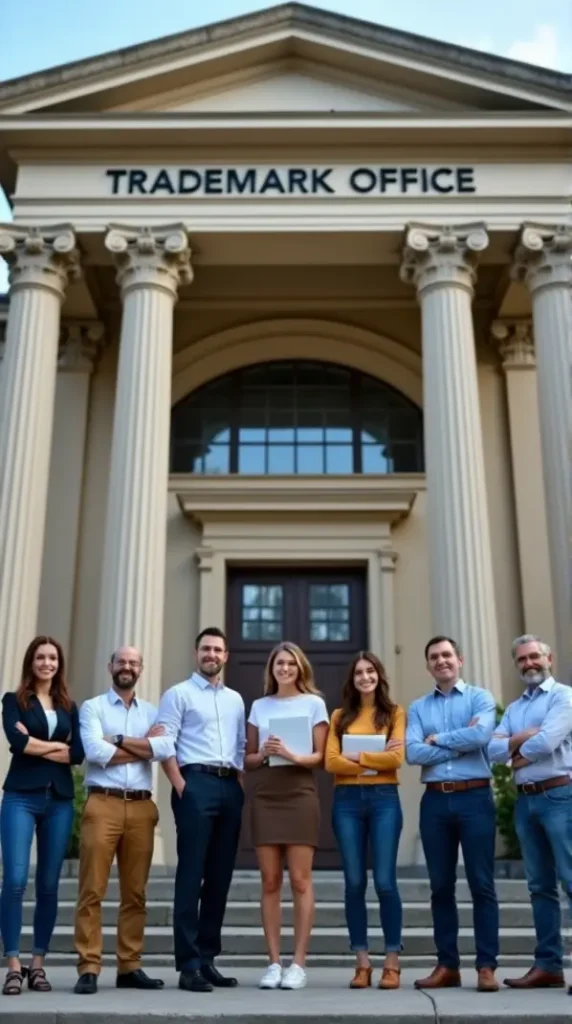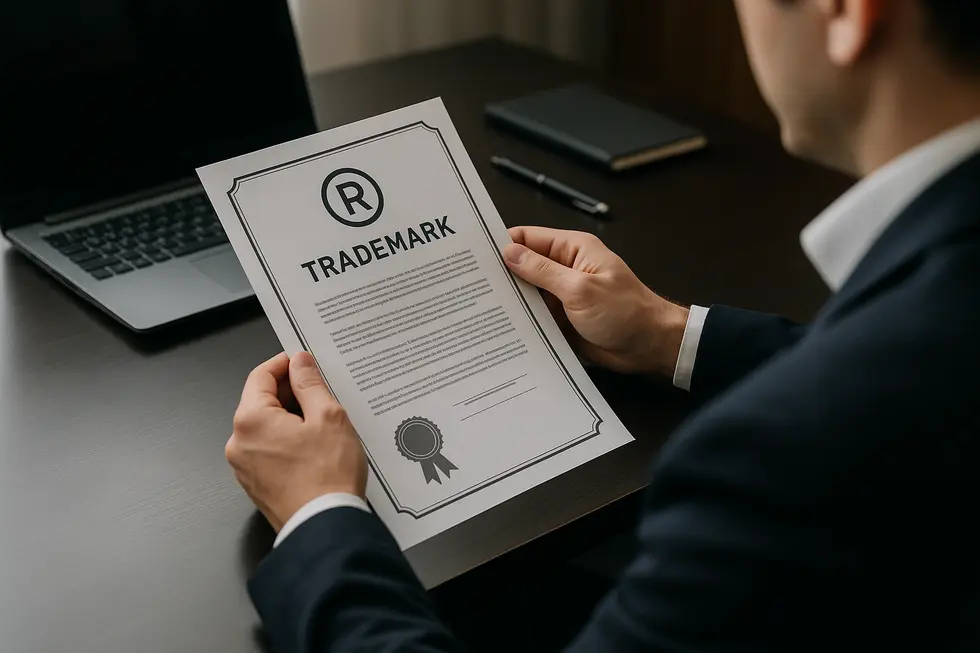Введение
Ensuring your website content is protected starts with a clear and effective copyright text. For business owners, this small but crucial element not only asserts your ownership but also helps guard your intellectual property from unauthorized use. This guide breaks down the key components that make up proper copyright text, highlights its legal and practical importance, and offers best practices for seamless integration on your website. Additionally, it explores optional licensing to clarify usage permissions and explains how registration and reporting mechanisms can further enhance your protection. Together, these chapters provide a comprehensive approach to safeguarding your website’s original content and securing your brand’s digital presence.
Оглавление
Chapter 1: Fundamental Components of Copyright Text for Website
- Key Legal Principles and Ownership Assertions in Website Copyright Notices
- Effective Placement and Timely Updates: Ensuring Your Website’s Copyright Notice Works
- Navigating Legal Nuances and Rights Management in Website Copyright Notices
Chapter 2: Legal and Practical Significance of Copyright Text for Website
- Establishing Rights and Enforcement Measures: The Legal Backbone of Website Copyright Notices
- How Copyright Text Enhances User Awareness and Prevents Infringement on Websites
- Strengthening Website Content Protection through Copyright Notices and Registration
Chapter 3: Best Practices for Implementing Copyright Text for Website
- Crafting an Effective and Visible Copyright Notice for Your Website
- Integrating Legal Frameworks and Technical Measures to Fortify Website Copyright Protection
- Crafting Clear Copyright Notices: Transparency and Licensing for Website Protection
Chapter 4: Optional Licensing and Permissions in Copyright Text for Website
- Enhancing Website Copyright Text with Creative Commons and Custom Licensing Technologies
- Balancing Economic Benefits and Legal Risks in Website Copyright Licensing
- How Licensing Choices Shape Society and International Relations in Website Copyrights
Chapter 5: Enhancing Protection Through Registration and Infringement Reporting in Copyright Text for Website
- Building a Strong Legal Defense: The Role of Copyright Registration and Infringement Reporting on Websites
- Leveraging Registration and Advanced Monitoring to Safeguard Website Copyright Text
- Maximizing Legal Security and Brand Integrity through Copyright Registration and Reporting
Chapter 1: Fundamental Components of Copyright Text for Website
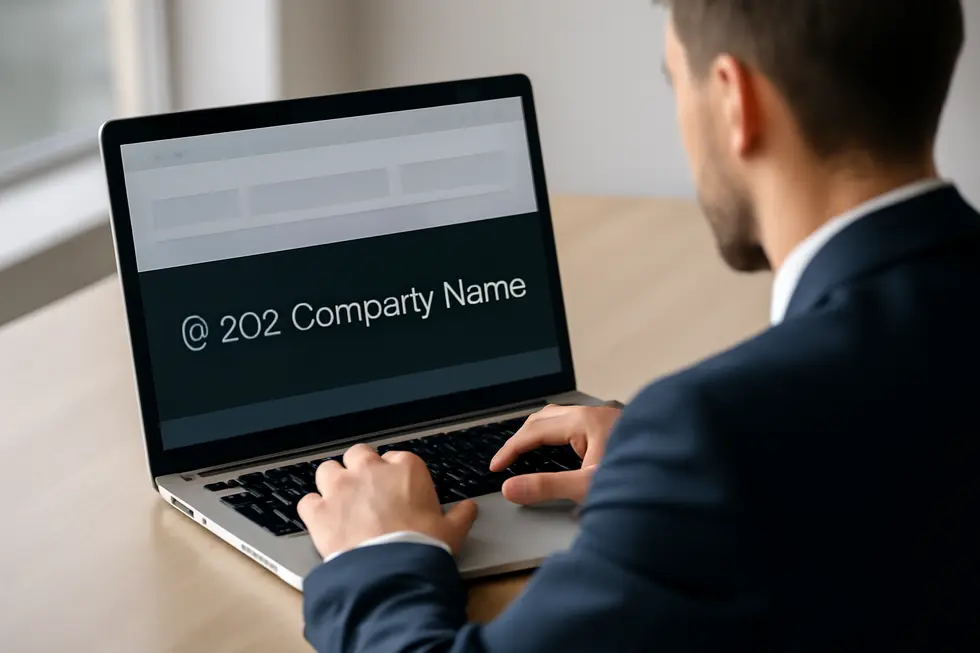
1. Key Legal Principles and Ownership Assertions in Website Copyright Notices
Asserting clear ownership and legal rights is crucial in crafting effective copyright text for a website. At its core, copyright protection applies to original works fixed in a tangible form, such as website content including text, images, or multimedia. The creator or rightful owner who produces such original content holds exclusive rights granted by copyright law. These rights encompass reproduction, distribution, public display, performance, and the creation of derivative works based on the protected material. Properly stating these rights through copyright notices not only signals ownership but also serves as a deterrent against unauthorized use and infringement.
A copyright notice typically integrates three fundamental elements: the © symbol, the year of first publication (or a date range reflecting updates), and the name of the copyright holder. Although not legally mandatory, this notice is widely recommended to establish a presumption of ownership and to communicate that the material is protected. Supplementing the notice with terms like “All rights reserved” further emphasizes the limitation of rights granted to others unless explicitly authorized.
Beyond the notice itself, website owners should be prepared to document instances of unauthorized use, demonstrating both the originality of their work and the similarity to infringing content. This evidence is foundational in enforcing rights through cease-and-desist actions or legal proceedings. Additionally, licensing agreements or terms of use provide contractual frameworks that clarify permitted uses or restrictions, strengthening the legal position for protecting website content.
It is important to note that copyright covers works with human authorship; purely AI-generated texts currently lack copyright protection in some jurisdictions. Nonetheless, content reflecting human creativity combined with AI assistance may retain protection for its human-originated elements.
For further insights into strategies for protecting website content through copyright, review this resource: How to Use Copyright Protection for Business Website Content.
To explore related intellectual property considerations and the interplay of copyright with other protections, the guide on categories of intellectual property rights offers useful context.
2. Effective Placement and Timely Updates: Ensuring Your Website’s Copyright Notice Works
Positioning your copyright notice strategically is vital to its role in asserting ownership and deterring infringement. The universally accepted practice is to place the copyright text prominently in the footer of every webpage. This ensures consistent visibility without interrupting user navigation or page design. Keeping the wording clear and straightforward—avoiding legal jargon—helps visitors immediately recognize the notice’s significance without confusion.
Updating the copyright year is just as crucial as proper placement. A dynamic year reflecting the most recent content update signals active maintenance and ongoing protection of your intellectual property. If your site undergoes significant content additions or redesigns, adjusting the copyright year accordingly documents those changes and reinforces your claims. Consistency in the styling and formatting of the notice across all pages further conveys professionalism and strengthens the credibility of your copyright claim.
Beyond the basics, embedding useful contact information or a direct link to request user permissions fosters transparent communication channels should others seek to reuse your content. If your website employs specific licensing frameworks such as Creative Commons, linking the copyright statement to detailed terms clarifies allowable uses and reinforces boundaries.
Moreover, a copyright notice alone does not prevent unauthorized use. Active monitoring—through manual auditing or automated tools—helps detect infringement early so you can respond promptly and protect your rights effectively. For those interested in deeper insight on copyright disclaimers for websites, see LegalKart’s comprehensive guide.
Integrating these practical placement and updating strategies ensures your copyright text is both visible and current, maximizing its effectiveness as a fundamental component of your website’s intellectual property protection.
For further reading on establishing intellectual property rights for your brand, consider reviewing this detailed resource on intellectual property rights categories.
3. Navigating Legal Nuances and Rights Management in Website Copyright Notices
Beyond the basics of displaying a copyright symbol, year, and owner name, effective website copyright text also demands an understanding of supplementary legal considerations and strategic rights management. Copyright grants the owner exclusive rights to reproduce, distribute, and publicly display the protected content. Clearly displaying a copyright notice—such as “© [Year] [Owner]. All rights reserved.” in visible areas like the footer—not only asserts ownership but also serves as a deterrent against unauthorized use. While copyright protection arises automatically upon creation, formal registration can enhance enforcement, especially when dealing with infringement claims.
Permissions play a crucial role when third-party content is incorporated. Website owners must secure usage rights unless the material qualifies for fair use, is in the public domain, or carries a Creative Commons license compatible with the website’s intent. Licensing original content under Creative Commons can foster sharing under defined terms while retaining essential rights. Compliance with laws governing online content, particularly the Digital Millennium Copyright Act (DMCA) in the U.S., is essential for addressing infringement effectively. The DMCA establishes a formal takedown process that website operators should understand to safeguard their content.
Integrating these legal dimensions strengthens the protection of textual content and reduces risks related to unauthorized copying or scraping. Managing copyrights proactively by monitoring usage and updating notices after substantive content changes supports ongoing legal clarity. For further guidance on writing precise copyright notices reflecting legal and practical considerations, consult resources such as this practical advice. Additionally, exploring related intellectual property rights frameworks can provide a broader context on safeguarding creative assets on your website, as detailed in this comprehensive guide on types of intellectual property rights.
Chapter 2: Legal and Practical Significance of Copyright Text for Website
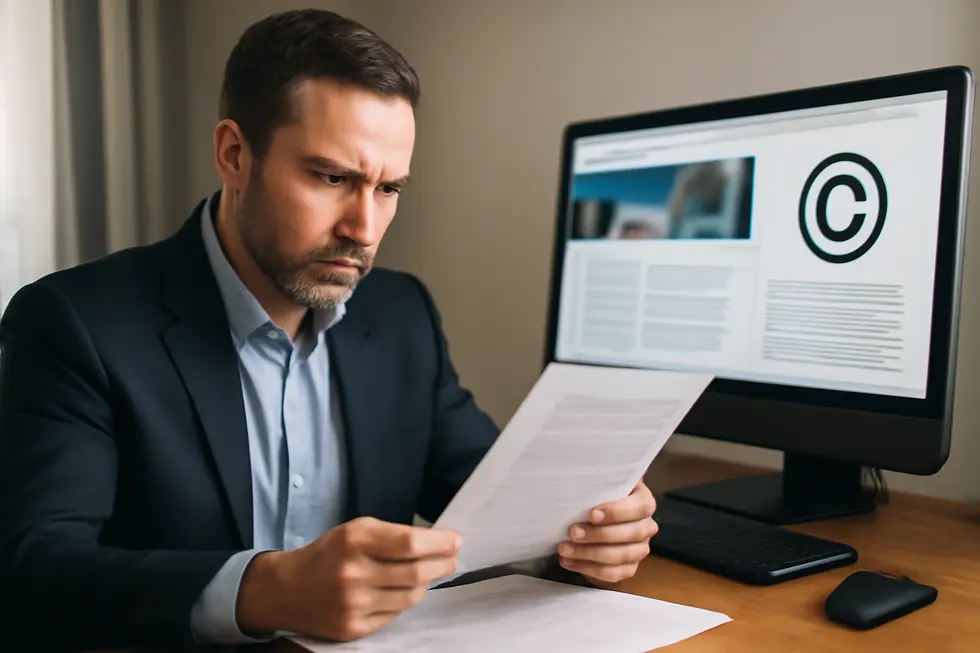
1. Establishing Rights and Enforcement Measures: The Legal Backbone of Website Copyright Notices
Copyright protection begins the instant original content is created and fixed in a tangible or digital form. This automatic protection grants the creator exclusive rights to reproduce, distribute, display, and adapt their work, without needing formal registration. However, for websites, registering the copyright with official government bodies strengthens the legal standing and enables more effective enforcement, such as suing for damages and attorney’s fees.
The core legal framework is grounded in statutes that confer specific exclusive rights to content owners, including rights over reproduction and creation of derivative works. While ideas themselves are not protected, the unique expression fixed on a website—text, images, or multimedia—is safeguarded under these laws. The visible copyright text, often formatted as © [year(s)] [owner name], reflects this legal entitlement and serves as a public declaration of ownership.
Enforcement mechanisms play a crucial role in protecting website content from infringement. One primary method is through takedown notices under legislation like the Digital Millennium Copyright Act (DMCA). These notices compel online platforms to remove unauthorized copies or uses of copyrighted material, benefiting from provisions that shield platforms acting in good faith. When such removal requests fail, copyright holders may pursue litigation to enforce their rights.
On an international scale, protecting website copyrights can involve registering copyrights with customs authorities to block counterfeit physical goods or pursuing legal action in foreign courts to remove unauthorized digital content. Continuous monitoring using specialized tools helps detect infringements early and maintain protection over time.
This combination of automatic legal rights, formal registration, clear public notice, and responsive enforcement creates a robust system that supports website owners in asserting and defending their intellectual property. For deeper insights on related intellectual property concerns, explore intellectual property rights basics.
More detailed guidance on copyright law foundations and enforcement can be found at the U.S. Copyright Office website: https://www.copyright.gov.
2. How Copyright Text Enhances User Awareness and Prevents Infringement on Websites
A clear and well-displayed copyright text on a website plays a crucial role beyond merely marking legal ownership—it actively shapes user behavior and strengthens content protection. By embedding the © symbol along with the relevant year or range of years and the owner’s name, websites broadcast a straightforward message: this material is protected intellectual property. This notification acts as an immediate cue to visitors, elevating user awareness about the site’s content rights. It reminds users that unauthorized copying or misuse carries consequences, thereby reducing accidental violations.
Moreover, copyright notices embedded in accessible locations like the homepage footer can link to detailed usage policies. This practice educates visitors on acceptable interactions, clarifies any reuse permissions, and helps demystify copyright compliance. When websites provide such transparency and context, users become more responsible content consumers, less likely to infringe unknowingly.
Deterring infringement is another practical benefit of copyright text. While the notice itself does not create legal protection, it supports enforcement efforts. Having a visible copyright mark enables quick identification of ownership in cases of unauthorized use. Websites can leverage this by proactively monitoring for infringements, issuing formal takedown demands, and relying on established legal frameworks such as the DMCA to swiftly remove offending content. These steps reinforce the seriousness of ownership claims and discourage illicit use.
By combining clear ownership notices with educational resources and active enforcement, website operators build an environment that respects intellectual property and minimizes disputes. Displaying copyright text prominently balances the dual goals of user engagement and legal preparedness, providing practical advantages for both content creators and visitors.
For more on managing intellectual property rights effectively within digital spaces, see this insightful guide on categories of intellectual property rights.
(Source: CivicPlus copyright notice guidance)
3. Strengthening Website Content Protection through Copyright Notices and Registration
A website’s copyright protection extends beyond simply displaying a notice; it is significantly fortified by combining clear copyright text with formal registration. While copyright automatically arises once original content is created, registering the work with the relevant government office enhances legal enforcement. This registration acts as concrete evidence of ownership and the date of creation, crucial in infringement disputes. For example, in the United States, registration with the Copyright Office enables claimants to seek statutory damages and attorney’s fees, creating a powerful deterrent against unauthorized use.
The copyright text itself plays a vital role in practical protection. Featuring the © symbol, the year or range of years reflecting the work’s publication, and the copyright holder’s name openly asserts ownership. This visible declaration can discourage infringement by signaling that the content creator is aware of their rights and prepared to defend them. Supplementing this notice with phrases like “All rights reserved” or specifying usage terms, such as Creative Commons licenses, clarifies how others may legally interact with the content.
Beyond textual notices, digital watermarking and maintaining thorough records of content creation and updates amplify protection. These methods allow tracking and verification that support legal claims if infringement occurs. Additionally, ongoing monitoring—using automated alerts and reverse image searches—helps detect unauthorized use early. Some websites also deploy digital rights management (DRM) solutions to control copying and distribution, although such measures must balance protection with user experience.
Together, a clear and updated copyright notice combined with formal registration and active enforcement measures establish a robust legal and practical shield for website content. For businesses seeking to understand the interface between copyright notices and broader intellectual property rights, exploring detailed guidance on copyright protection and business applications offers valuable insights. Further practical steps for reinforcing content security are outlined in publicly available resources like the content protection overview.
Chapter 3: Best Practices for Implementing Copyright Text for Website
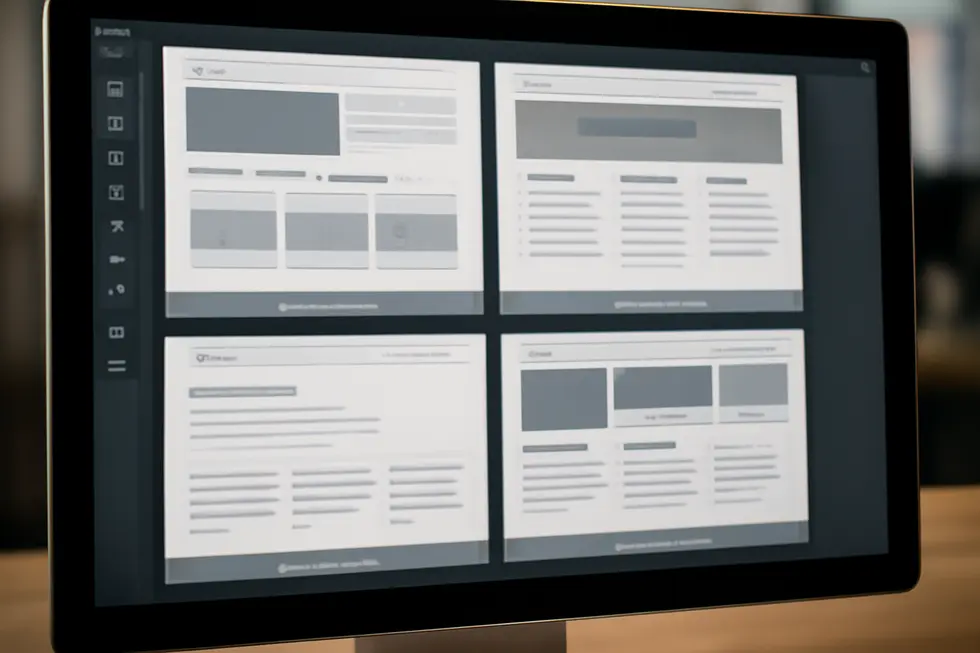
1. Crafting an Effective and Visible Copyright Notice for Your Website
A clear, properly formatted copyright notice is essential for asserting ownership and protecting your website’s original content. The notice typically starts with the © symbol, followed by the year of first publication or a range of years if the material has been updated, and the name of the copyright holder. This simple yet powerful line, such as © 2024 Your Company Name, serves as an explicit signal of ownership and helps deter unauthorized use.
Placement plays a crucial role in ensuring that your copyright notice is noticed. The customary and most effective location is in the website footer, consistently displayed on every page—especially the homepage—to maximize visibility for all visitors. While the notice often stays discreet in size and color to avoid visual distraction, it must maintain enough contrast and legibility to be easily read without blending into the background.
Keeping the copyright year current is another vital best practice. Updating this annually or whenever significant content changes occur signals active rights management and preserves the relevance of your protection. Additionally, linking the copyright notice to a dedicated page explaining your copyright policies and usage terms can enhance clarity. Although not mandatory, this practice helps educate users about reuse restrictions and strengthens the notice’s legal impact.
For stronger enforcement, consider complementing the copyright notice with technical measures like Digital Rights Management (DRM), including watermarking or license controls. These tools add practical barriers against unauthorized use beyond the visible copyright statement.
Together, these steps align with recognized industry standards, ensuring your copyright notice is both prominent and effective in safeguarding your website’s content. For further insights on copyright details tailored for business owners, consult copyright information example.
2. Integrating Legal Frameworks and Technical Measures to Fortify Website Copyright Protection
Protecting original content on a website requires a strategic blend of legal frameworks and technical measures. At the core, legal protections begin with ensuring that all website content is either original or properly licensed. Prompt copyright registration, while not mandatory, provides formal recognition that can simplify enforcement and potential litigation. The use of the Digital Millennium Copyright Act (DMCA) takedown procedures allows website owners to swiftly address unauthorized use by submitting notices to hosting services or platforms, helping to remove infringing material effectively. Alongside this, sending cease-and-desist communications signals serious intent to protect intellectual property, often deterring further violations. Internally, educating team members about intellectual property policies fosters a culture that respects and upholds copyright ownership, adding an additional layer of protection.
Technically, displaying a clearly visible copyright notice on every page asserts ownership and informs visitors of the protected status of the content. This notice typically includes the © symbol, publication year(s), and copyright holder’s name, providing a straightforward but powerful declaration. Incorporating digital watermarks on images or videos serves as a visual deterrent against unauthorized reuse, embedding ownership details within the media itself. Utilizing design tools to create custom graphics under exclusive control reduces dependence on third-party licenses and minimizes infringement risk. Regular monitoring—either through automated tools or manual checks—helps identify potential copyright violations early, enabling timely response.
For websites featuring user-generated or AI-produced content, it is crucial to understand that liability may extend to the developer if infringing material appears without authorization. Thus, proactive legal and technical strategies must be consistently updated to address these emerging challenges. Combining these approaches ensures a robust shield over website content, aligning with best practices in intellectual property management.
For further insights on protecting your intellectual property through legal mechanisms, see the comprehensive resource on categories of intellectual property rights.
The brand-focused guide from Brand Alignment offers an authoritative overview of combining legal registration, education, and monitoring to safeguard digital assets, underscoring the importance of harmonizing legal and technical protections in the digital realm.
3. Crafting Clear Copyright Notices: Transparency and Licensing for Website Protection
Establishing transparency and defining licensing terms within your website’s copyright text are essential practices that enable clear communication of ownership and permitted uses. A precise copyright notice typically includes the © symbol, the year or range of years reflecting when the content was created or updated, and the name of the rights holder—this combination signals authority and deters infringement. Beyond this baseline, specifying licensing information elevates protection by outlining how others may interact with your content.
If you intend to allow any form of reuse, articulation through well-known license frameworks, such as Creative Commons, clarifies permissible actions. For example, licenses can require attribution, restrict commercial use, or prohibit derivatives, providing flexible yet enforceable terms. Explicitly linking to detailed legal documents like Terms of Use or Licensing Agreements alongside the copyright notice ensures users find authoritative guidance on their rights and obligations. This is especially important when the site incorporates third-party or user-generated content, which should be transparently labeled to avoid confusion about ownership and responsibility.
Maintaining up-to-date copyright years on every page reflects active stewardship, reinforcing your claim and demonstrating ongoing vigilance. If infringement claims arise, timely, professional responses help resolve disputes efficiently and support your legal standing. Combining a visible, consistent copyright statement with clear licensing terms and accessible legal references lays the groundwork for robust intellectual property management.
For further practical guidance on integrating these elements seamlessly within your website’s structure, resources such as MDN Web Docs offer valuable insights on optimizing clarity and accessibility.
Additionally, understanding how copyrights interact with broader intellectual property strategies may benefit from exploring comprehensive resources focused on copyright agreements and business implications. This link provides in-depth perspectives that support a more nuanced approach to legal protections online.
Chapter 4: Optional Licensing and Permissions in Copyright Text for Website
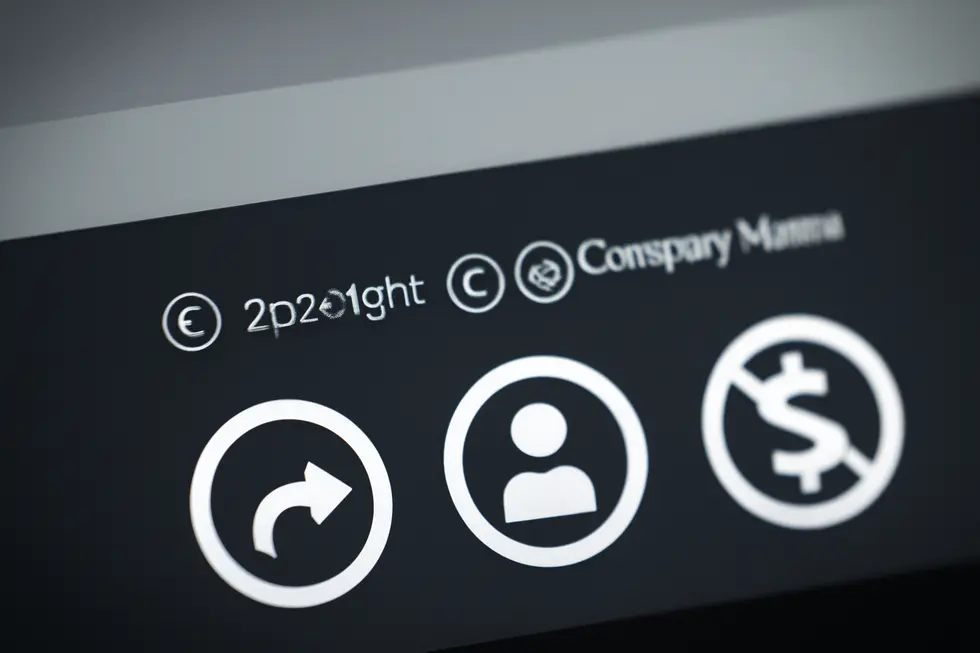
1. Enhancing Website Copyright Text with Creative Commons and Custom Licensing Technologies
Integrating optional licensing and permissions into website copyright text requires thoughtful technological approaches to communicate rights clearly and streamline usage compliance. When employing Creative Commons (CC) licenses, websites should display recognizable license icons alongside human-readable summaries that inform users about permissible actions such as sharing or modifying content. Beyond this, embedding machine-readable metadata using standards like RDFa or JSON-LD is essential. This semantic markup enables search engines, social media platforms, and digital archives to automatically detect licensing terms, enhancing content visibility while ensuring proper attribution.
Precise attribution instructions consistent with the chosen CC license should accompany all relevant content, enabling users to credit authors correctly. Specifying the license version, typically the latest recommended such as CC BY 4.0, ensures clarity regarding rights and protections. Conversely, websites offering custom licenses must integrate explicit, tailored agreements outlining usage rights, restrictions, and termination terms. These are often enforced through e-commerce or membership platforms that capture user consent via clickwrap agreements before granting access.
Custom licensing demands robust backend systems to log acceptances, monitor unauthorized use, and potentially implement digital rights management tools. While Creative Commons licenses facilitate open sharing with minimal administration—ideal for educational resources and broad distribution—custom licenses provide precise control over commercial use and redistribution. The implementation of both approaches benefits from combining clear visual cues, thorough legal text, and technological embedding to balance accessibility with protection.
For those managing licensing on websites, leveraging reliable tools to generate proper code snippets and embedding metadata improves compliance and enforcement. The integration of technological standards with user-friendly interfaces reinforces the credibility and enforceability of copyright and permission notices. This approach ultimately supports the dual goals of encouraging lawful sharing under open frameworks and safeguarding proprietary content through customized agreements.
For further exploration of intellectual property categories related to such protections, refer to this comprehensive overview of intellectual property rights.
External Resource: Creative Commons licensing guidelines and technical embedding methods provide valuable technical details for this implementation.
2. Balancing Economic Benefits and Legal Risks in Website Copyright Licensing
Incorporating optional licensing and permissions in website copyright text introduces a nuanced interplay between economic opportunities and legal safeguards. Content owners can leverage licenses to articulate specific usage rights, from prohibiting any reuse to enabling sharing under precise conditions such as attribution or non-commercial use. This strategic control not only helps in protecting intellectual property but also opens avenues for monetization. For example, selling commercial licenses or entering partnerships can generate revenue streams, while free licenses like Creative Commons promote wider dissemination and increased visibility. However, choosing the right licensing model demands careful consideration: exclusive licenses can safeguard brand value but may restrict market expansion if underutilized, whereas non-exclusive licenses broaden distribution at the risk of market dilution.
Legally, clearly defined licensing terms reduce the risk of infringement disputes, helping to deter unauthorized use and providing recourse in case of violations. Unlicensed or improperly licensed content use can lead to takedown notices, legal claims, and substantial damages. Yet, complex licenses, especially copyleft or open source, come with obligations that might unintentionally impose restrictions, such as disclosing source code or limiting commercial applications.
Emerging challenges arise from advances like AI, where uses of copyrighted content by or within AI systems blur the lines of permissible use. Website owners must carefully draft licensing terms to address these uncertainties and protect their intellectual property effectively.
Thus, optional licensing in copyright text involves a delicate balance: it amplifies economic potential while demanding robust legal frameworks to mitigate risk. Striking this balance is essential for sustainable rights management and maximizing the value of website content.
For further guidance on structuring licensing agreements to protect IP rights, see this detailed resource. Additionally, understanding broader intellectual property rights categories can offer deeper insight into comprehensive asset protection.
3. How Licensing Choices Shape Society and International Relations in Website Copyrights
Optional licensing embedded in website copyright text extends far beyond mere legal formalities. It actively shapes how societies access, share, and innovate with digital content. By selecting licenses such as royalty-free or Creative Commons, website owners empower lawful use that encourages knowledge dissemination while retaining essential control. This balanced approach reduces risks of costly legal disputes and reputational damage from unauthorized content use. Moreover, these licensing models directly impact digital business strategies, enabling flexible budgeting and broader audience engagement through varied usage rights.
On a societal level, clear permissions foster trust in the digital ecosystem. Users and creators alike benefit, as transparency about reuse rights prevents infringement and fuels creative progress. The ability to monetize content while permitting certain reuse nurtures an environment of collaboration and ethical sharing.
This dynamic extends into the geopolitical realm where copyright permissions influence international data flows and security policies. Countries with stringent data protection laws may restrict cross-border content sharing, affecting global academic and commercial exchanges. Such regulations can serve as tools for national security, sometimes limiting access to valuable research or cultural materials from abroad. Unauthorized use of copyrighted digital assets risks escalating diplomatic conflicts, especially as AI-generated content complicates attribution and enforcement worldwide.
Exclusive versus non-exclusive licenses bear strategic weight too. Exclusivity can concentrate control to foster deep partnerships, while non-exclusive arrangements diversify reach but require complex management. Both choices reflect how intellectual property rights are leveraged within global markets to assert economic influence.
Ultimately, the integration of optional licensing in website copyright text reverberates across social innovation and international relations, defining how knowledge is protected, shared, and controlled in a digitally interconnected world.
For more insight into copyright frameworks and IP rights, see this comprehensive guide to intellectual property rights.
Внешняя ссылка: Legal risks of using third-party content
Chapter 5: Enhancing Protection Through Registration and Infringement Reporting in Copyright Text for Website

1. Building a Strong Legal Defense: The Role of Copyright Registration and Infringement Reporting on Websites
Building a Strong Legal Defense: The Role of Copyright Registration and Infringement Reporting on Websites
Copyright protection for website content begins automatically upon creation, but formal registration amplifies legal strength significantly. Registering with an official copyright office transforms your claim into prima facie evidence in court, providing a robust presumption of ownership. This legal foundation not only simplifies enforcement but also enables access to statutory damages and attorney’s fees, essential tools for effective deterrence and compensation. The registration process typically involves submitting a detailed application, depositing copies or screenshots of the website content, paying applicable fees, and securely retaining the registration certificates. Websites present unique registration challenges; textual content is usually filed as literary work, while source code and images may require specific deposit formats to demonstrate originality.
Beyond registration, active infringement reporting acts as a vital enforcement mechanism. Monitoring for unauthorized use, especially across the vast digital landscape, demands vigilance and often the assistance of automated scanning tools. Many online platforms maintain readily accessible systems for reporting copyright violations, enabling swift takedown of infringing materials once ownership is clearly established. Providing clear evidence in reports improves the chance of prompt resolution, while verified accounts on social media and other services further reinforce your claim and help prevent impersonation.
Together, copyright registration and vigilant infringement reporting compose a comprehensive framework that balances proactive legal groundwork with reactive, practical enforcement. This dual approach empowers website owners to protect their intellectual property more effectively, addressing common vulnerabilities inherent to digital content. For detailed procedural guidance on registration, you may consult authoritative resources, such as LegalZoom’s overview of copyright registration processes.
2. Leveraging Registration and Advanced Monitoring to Safeguard Website Copyright Text
Formal registration of copyright remains a cornerstone in strengthening the legal foundation for protecting website content. By securing official registration with relevant authorities, such as the U.S. Copyright Office, copyright owners gain vital proof of ownership, essential when pursuing infringement claims or seeking damages. This registration not only reinforces legal standing but also acts as a deterrent against unauthorized use by signaling that protection is actively maintained.
Beyond registration, employing technological innovations plays an increasingly critical role in ongoing copyright enforcement. AI-driven monitoring tools systematically crawl the web to detect unauthorized reproductions or adaptations of website text. These systems use sophisticated text matching, pattern recognition, and web crawling to identify infringements, even when original content is modified. Coupling these automated methods with manual strategies—such as setting up Google Alerts for distinctive content phrases and regularly searching platforms prone to misuse—provides comprehensive surveillance.
Additionally, infringement reporting mechanisms across various platforms facilitate swift removal of unauthorized content. Website owners can issue DMCA takedown notices or use platform-specific complaint forms to enforce their rights promptly. The expansion of digital environments, including emerging marketplaces for virtual goods, demands vigilance and adaptability to protect intellectual property effectively.
Emerging technologies like blockchain offer promising avenues for verifying content authenticity and tracking distribution, enhancing transparency and control over digital assets. Integrating formal registration with continuous technological monitoring and robust reporting establishes a resilient framework that significantly bolsters protection against copyright infringement on websites.
For further insights on strategic copyright protections, explore practical approaches detailed in Three Ways to Protect Your Original Idea. This resource complements foundational concepts with actionable guidance, reinforcing effective safeguards through registration, monitoring, and enforcement.
Complementing registration, the broader strategy benefits from understanding intellectual property rights comprehensively, which can be explored in greater detail at Intellectual Property Rights Categories.
3. Maximizing Legal Security and Brand Integrity through Copyright Registration and Reporting
Copyright registration serves as a critical pillar in enhancing the protection of website content beyond the automatic rights granted at creation. While copyright exists from the moment original work is fixed in a tangible form, registering the copyright provides undeniable, official proof of ownership. This documentation streamlines legal enforcement and facilitates quicker, more decisive action against infringement. In jurisdictions like the United States, Canada, and many others worldwide, registration is a prerequisite for filing lawsuits and can increase potential damages awarded, demonstrating its strategic importance for creators and businesses alike.
Alongside registration, the ability to report infringement swiftly and effectively is key to maintaining control over digital content. Many online platforms incorporate standardized reporting systems that allow copyright holders to submit detailed notices of unauthorized use. These systems often include step-by-step forms compliant with frameworks like the DMCA, ensuring efficient processing and takedown of infringing material. Quick reporting limits financial losses and preserves brand reputation by removing substandard or unauthorized replicas, reinforcing the value of original content.
The combined use of registration and infringement reporting creates a robust strategy that extends far beyond legal protection. Active enforcement signals a proactive defense of rights, deterring potential infringers and fostering a marketplace that respects intellectual property. This approach not only safeguards revenue streams but also promotes innovation by offering creators confidence that their work is recognized and protected.
Moreover, this interplay supports societal respect for intellectual property, ensuring that creative efforts are rewarded and publicly accessible according to lawful terms. Countries like India balance these protections with digital content realities through legal instruments such as the Copyright Act (1957) and the Information Technology Act (2000), which underpin both registration benefits and infringement remedies.
For businesses seeking to navigate these protective measures, understanding the detailed copyright registration and enforcement process is essential. Utilizing formal registration combined with effective infringement reporting fosters a secure environment that upholds both creators’ rights and the integrity of the digital domain.
For more information on infringement reporting systems, see the GeeksforGeeks guide.
Заключительные мысли
Understanding and implementing proper copyright text on your website is a vital step in protecting your business’s intellectual property. By integrating the fundamental components of copyright notices, recognizing their legal and practical significance, and adopting best placement and update practices, you create a clear digital claim of ownership. Additionally, optional licensing terms provide flexibility in how others may use your content, increasing control and clarity. Finally, reinforcing your rights with copyright registration and accessible infringement reporting mechanisms empowers you to safeguard your website content proactively. This comprehensive approach ensures your brand and original work receive the respect and protection they deserve in the online realm.
Получите свой товарный знак сегодня! Тысячи людей защитили свой бренд, подав заявку на товарный знак. А чего ждете вы? Начните подавать заявку на товарный знак!
О нас
Лучший в мире сайт для регистрации товарных знаков и защиты вашего бренда, названия, логотипа или слогана.


